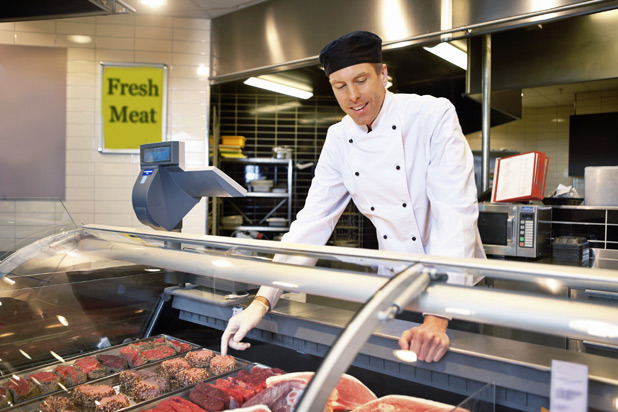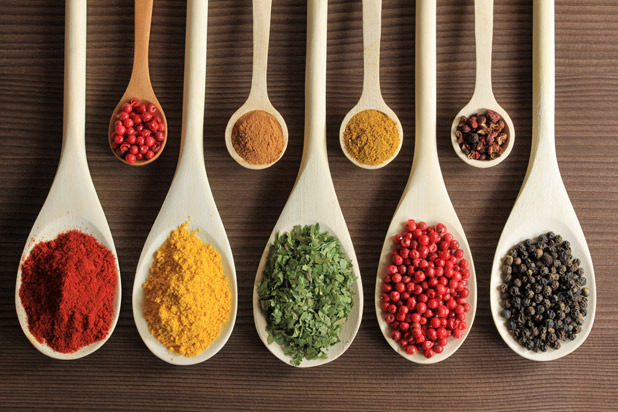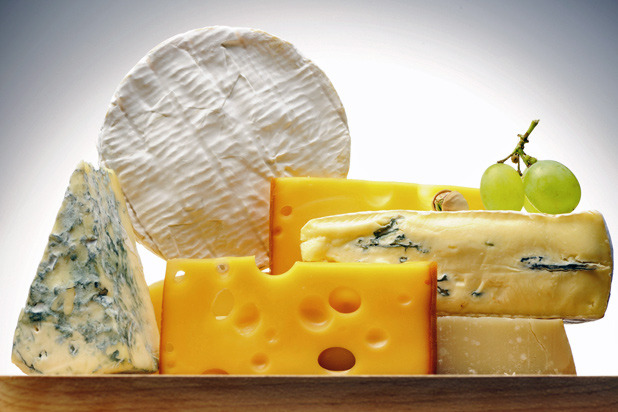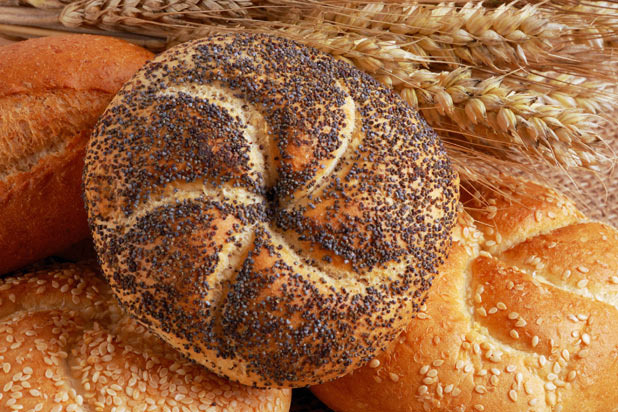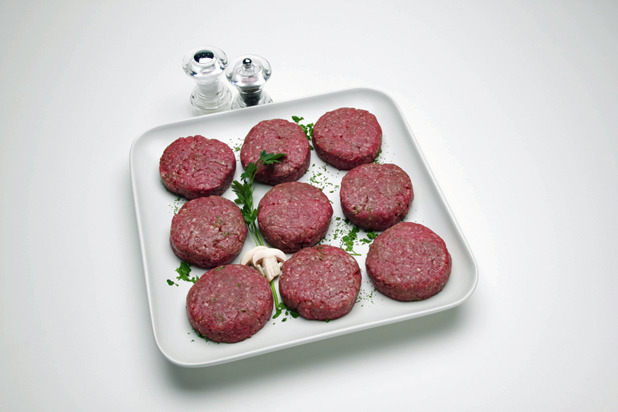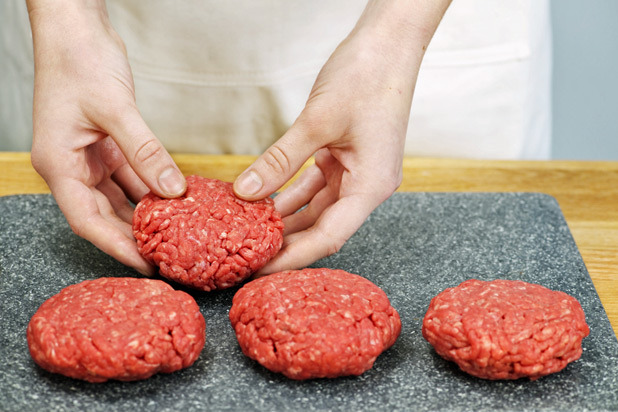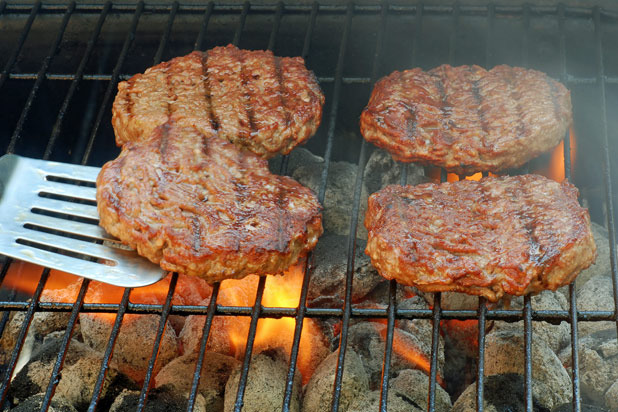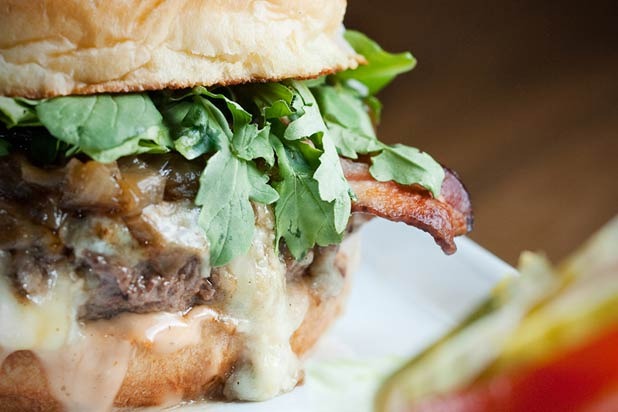How To Build The Perfect Burger Slideshow
It used to be that buying ground beef for a burger was pretty simple — all you had to do was decide on the percentage of fat. And that's still an important factor to consider. Govind Armstrong, executive chef and owner of the 8 oz. Burger Bar, says that a ratio of 85:15 of meat to fat is ideal for most burgers, although if you're looking for a richer, juicier burger, you may want to go with a ratio of 80:20.
The Beef on… Blends
Nowadays, it's possible to ask for custom blends made from whole cuts of beef at the meat counter in the grocery store. But where do you begin the conversation with the person standing behind the glass case? If you've never talked to him or her before and are accustomed to simply grabbing the shrink-wrapped stuff just off to the side, it can be intimidating the first time. (Don't worry — they'll be delighted to be talking to someone for a change.) Armstrong offers a few conversation-starters here.
Chuck is a good place to begin. "Most blends will have 50 to 75 percent chuck," says Armstrong. It has great flavor and marbling for the price, and so it's the ideal candidate for a base. And then you can get creative from there. Looking for more marbling and a deeper flavor than chuck? Add some short rib or brisket to the blend. Looking for a patty with a good bite and flavor that's on the leaner side? Add some sirloin to the mix. But for his everyday burgers, Armstrong is perfectly happy with freshly ground 100 percent chuck because it lets him get creative with the seasonings.
The Beef on… Seasonings
Here, it's important to consider what cuts went into the blend for the patties. If you've spent a good amount of money on a blend of short rib and chuck, for instance, you're probably just going to want to use good old salt and pepper, and maybe a little Worcestershire sauce or red wine, to really let the flavor of the meat shine. If you're just using basic chuck, on the other hand, seasoning meat with a blend of herbs, spices, or condiments may make a lot of sense. Armstrong, for instance, uses a blend of kosher salt, black and white pepper, ground coriander, dried oregano, thyme, and paprika. Whatever you do, it should be about enhancing the flavor of the meat, not drowning it out.
The Beef on… Cheese
Whether you want cheese or not on your burger is certainly a matter of preference, but if, like us, you say "Yes please to cheese," then you may be wondering if there are some combinations that work better than others. Armstrong says, "It kind of depends where you're going with the burger." Blue cheese, for example, is great with richer blends like short rib with brisket because of its bold flavor and aroma — but whether you go with a spicy blue cheese like Roquefort or a sweeter blue cheese like Gorgonzola depends on the toppings you plan on using. On the other hand, leaner blends like chuck with sirloin tend to go well with mellower cheeses; one of Armstrong's favorites, for example, is Bel Paese, a semi-soft cow's milk cheese that melts beautifully on a patty.
The Beef on… Buns
Armstrong's advice here is to match the burger to the bun. Making a rich, juicy short rib burger with bacon, dressing, and some serious toppings? Find something sturdy that will hold up to all those ingredients and soak up the juices without turning soggy — like focaccia, which has a flavor that won't clash with the meat and toppings. Or maybe your patty is made with lean sirloin, in which case it might be a good idea to dial up the richness factor with a brioche bun. And if you're making a homemade Big Mac, a sesame seed bun is a must.
The Beef on… Portioning
Armstrong says that he generally doesn't like making patties that weigh anything less than about 7- to 8-ounces, but this certainly depends on what you're making. A traditional patty melt, for instance, usually consists of a thinner patty and will require less meat. A thicker patty, on the other hand, will stay nice and juicy even with extended cooking and have enough space to hide a bit of butter or Brie in the middle, but there's a trade-off — you'll need to find a bun that will stand up to the added heft.
The Beef on… Shaping
When it comes to forming burger patties, less really is more. "You don't really want to make a patty and manipulate it too much," says Armstrong. Overworking the meat will cause it to turn dense and tough when cooked. It's best to shape it loosely, just until it holds together.
The Beef on… Cooking Techniques
There are many ways to cook a burger, and deciding which way is best — in a cast-iron skillet, on the grill, under a broiler, or even steaming it — is sure to elicit raucous debate. Instead, we offer advice on what is arguably the most discussed technique — grilling. Here, Armstrong likes to use gas for convenience, and mesquite or charcoal for additional flavor when he has a bit more time. He says the two most common mistakes he says home cooks make when grilling burgers are not letting the meat sit at room temperature for at least 15 minutes — which results in the outer edges cooking before the interior — and overcooking them. To guard against this fatal error, he suggests getting a meat thermometer to help cut out all the guesswork. Also, in his humble opinion, "Going past medium with anything besides ground chuck is wasteful." There it is from the man himself.
And Don’t Miss…
Cook editor Anne Dolce's story on the 50 Best Burger Recipes.

